Uniqlo is cutting water usage by 99% so your jeans don't kill the planet
Advertisement
CNA Lifestyle
Uniqlo is cutting h2o usage by 99% then your jeans don't impale the planet
CNA Lifestyle went to California to observe out how the Japanese company behind Uniqlo has adult tech to make your blue jeans in a thoroughly green manner.
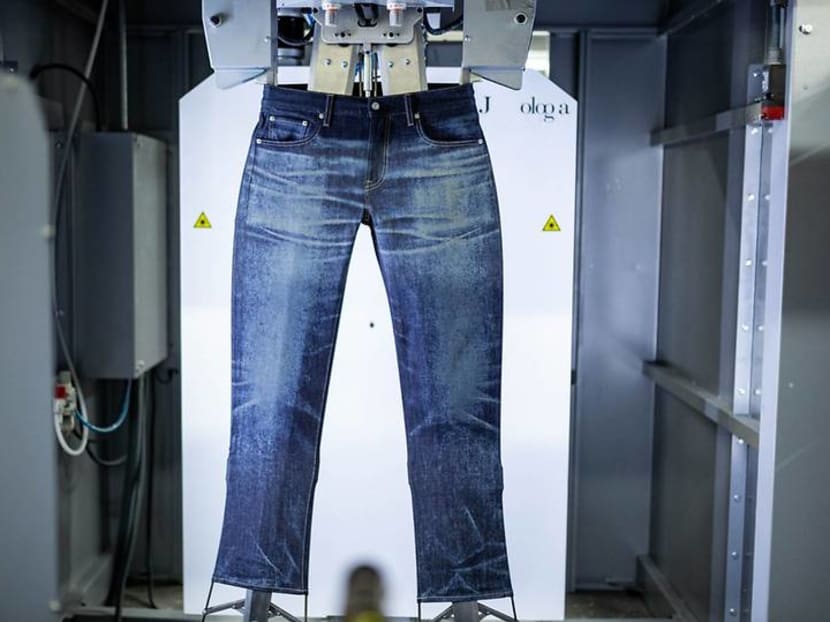
The process of creating 'vintage' jeans gets loftier-tech at the Fast Retailing Jeans Innovation Centre in Los Angeles. (Photo: Fast Retailing)
07 Sep 2022 06:30AM (Updated: 04 Jul 2022 03:05PM)
The dry, dusty and cactus-dotted scenery reminded me more than of the Netflix bear witness Narcos than of a state-of-the-art R&D facility where people make eco-friendly jeans.
But I was told that in this tranquillity and seemingly barren part of Los Angeles, one tin find the engineering science to create the washed look and silky-soft feel of vintage jeans using less water than a cactus needs. I was intrigued.
The visitor behind this indigo revolution is Fast Retailing. The Tokyo-headquartered retail company may non ring a bong but some of its mode brands might: Helmut Lang, J Make, GU, Theory, PLST, Comptoir des Cotonniers, Princess tam.tam and the largest of all, Uniqlo.
READ: Uniqlo founder: 'For the kickoff time in history, Asian sensibilities are beingness recognised'
But what is a Japanese jeans research centre doing in the centre of the California desert? "Jeans began in California and it has a history here," explained Masaaki Matsubara, the primary operating officeholder of the Fast Retailing Jeans Innovation Centre (JIC).
Which makes information technology the perfect place to attempt something new – like reinventing the way jeans are fabricated.

HELPING TO REDUCE WASTAGE
Jeans are one of the world's most ubiquitous slice of clothing – simply it's taking a toll on the planet.
For one, it takes at least ten,000 litres of water to produce just a kilo of raw cotton – enough to brand only one pair of jeans, co-ordinate to the Un. And that'southward not counting the water usage in the wash process the denim goes through to create the soft texture of used jeans – and other repercussions nosotros'll become to afterward.
We never intended to reduce the h2o used for jeans washing by only x per cent or twenty per cent. Ultimately, we want to reduce water usage to naught.
Beyond water wastage, there's too the result of producing likewise many clothes. According to a BBC report, the global garment production currently stands at more than 15 billion items a year – a number that has doubled in the past fifteen years because clothes are worn less and thrown away faster.
Singaporeans are guilty of this, also. A YouGov Jitney enquiry in 2022 revealed 73 per cent have thrown clothes away, with 25 per cent dumping more than 10 items of clothing.
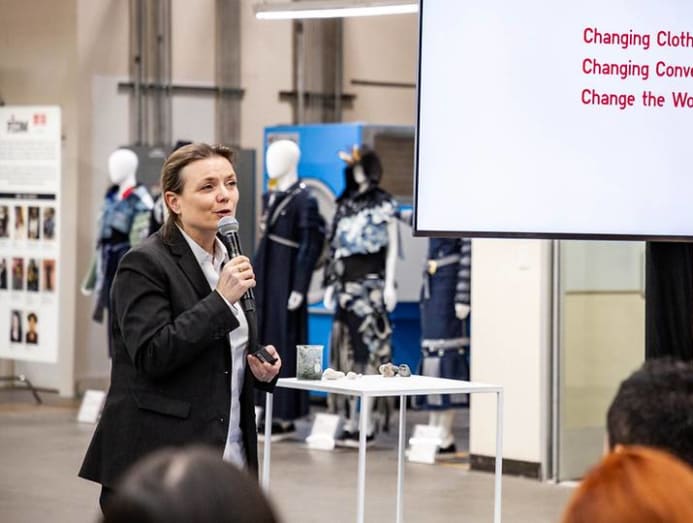
And, of class, Uniqlo itself is role of the organization that contributes to the cycle. A spokesperson said that it produces 1.3 billion items of clothing across the world each yr, with more than one-half (51 per cent, to be precise) of the make'due south sales coming from People's republic of china, Hong Kong, Taiwan, and Republic of korea.
Which is why Uniqlo's parent visitor is trying to do something about information technology.
TOUR OF Applied science
According to Fast Retailing'southward sustainability director, Veronica Rochet: "Making clothes that are long lasting and functional" is the visitor'southward style of helping to reduce global wastage.
Which brings us dorsum to our bout of the JIC. Looking more like a high-tech lab than a mill, the well-lit and loftier-ceilinged JIC is unlike the dark, stuffy and sweaty identify you'd imagine with piles of failed jeans experiments roofing the floor. Instead, it looked like Marie Kondo had been at that place.
I was tempted to run my finger over a ledge to bank check for dust but didn't retrieve that would spark joy in my host.
READ: Fashion bargain hunting: The best second-mitt shops in the world
The centre was founded in 2022 past the Tokyo-born but LA-based Matsubara, who's been totally focused on figuring out how to make sustainable jeans.
He explained the conventional procedure of making ane. "Jeans still aren't complete after sewing. They are the simply garments that accept to get through a launder process – and they are the only dress that has to look old even though it's new," he said.
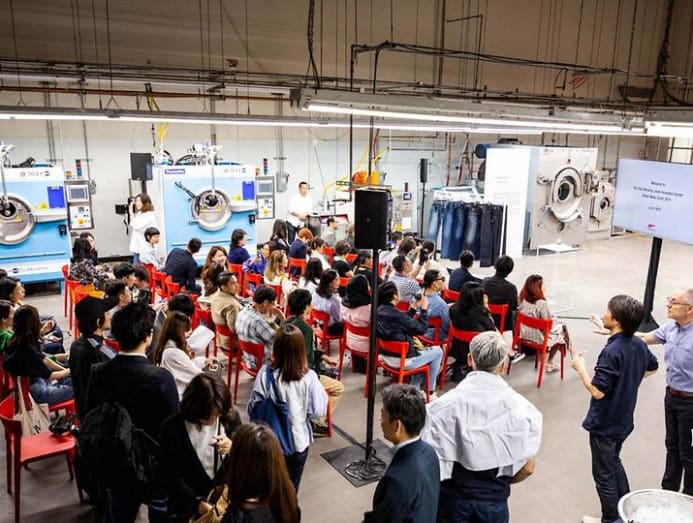
The launder procedure – which is stonewashing with pumice stones – softens the denim and eliminates its stiff, starchy texture. For the record, each pair of Uniqlo jeans uses an average of 100 litres of water to launder.
That's actually just 43 litres shy of what the average Singaporean uses per day in 2017, co-ordinate to the PUB.
What becomes of the pumice stones is some other waste material issue altogether. A staff said that each wash wheel typically requires about 80kg of pumice stones. But later merely i wash bicycle, they'll be reduced to half their size. "The stones plow into waste," Matsubara explained. "They suspension downwardly into tiny bits and when discharged, they pollute the water system."

Fifty-fifty creating the faded streaks (known equally whiskers), rips and tears that add to the "vintage" appearance of the jeans comes at a cost to the environment and workers. Chemicals such as potassium permanganate (if you paid attention in Chemistry class, it is toxic to aquatic animals and can burn down skin) are applied and the process can take an hour per pair of jeans.
I edged abroad when a staff demonstrated the old-school style of sanding down the jeans. Manual labour is again responsible for the aesthetically placed holes, rips and tears before the jeans are prepare to hit the stores.
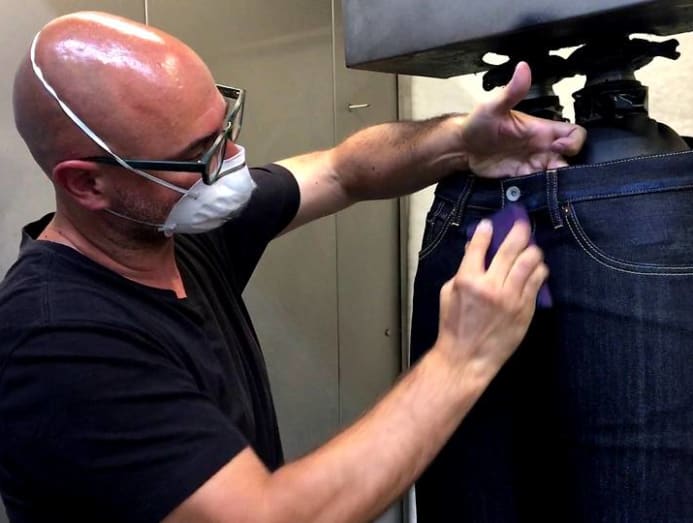
READY? Light amplification by stimulated emission of radiation AND ACTION
To deal with all of these bug regarding chemicals and water, Uniqlo has turned to technology for eco-friendly solutions.
A laser machine, for instance, is used for the laborious sanding procedure. This blob of a greyness metallic frame tin can replicate the whiskers or fade patterns that result from the wearer's repeated movements – afterwards years of dedicated clothing, as I thought dorsum to my ain jeans. But here, it was about to happen in an instant.
The platform had several pairs of jeans in various washes placed on information technology. An ominous yellowish light started to wink and a sound that wasn't too far off from a jumbo jet taking off deaf the room. Were the jeans going to grab burn down? Would I come across laser beams shooting out? Did anyone accept a fire extinguisher on standby?
If yous were anticipating a light amplification by stimulated emission of radiation prove like Marina Bay Sands', no such luck. Only the flash fires (yes, bodily fire) that flared up as quickly equally they died down wherever the invisible laser hitting the denim were just as exciting – perhaps even more so. And just like that, you get a specifically placed frayed edge or rip.
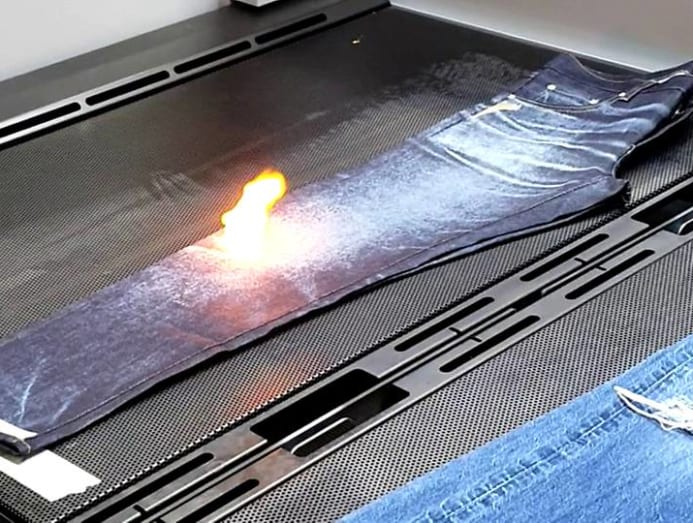
In fact, the very same distressed blueprint tin be replicated with precision on other pairs of jeans many times over. A designer just has to create the pattern on the calculator beforehand, and the laser arrangement tin churn out 60 pairs of jeans per hr, compared to the 10 per hour using manual labour. How's that for efficiency and consistency?
SAVING WATER
As for the wash processes, they're doing away with pumice stones altogether. Matsubara walked up to i of the cupboard-sized industrial machines and fished out a fistful of seemingly ordinary rocks. "Instead of using pumice stones to wash the jeans, we've developed our own eco stones made of polymer," he said. "They don't break downward and won't pollute the water organisation."
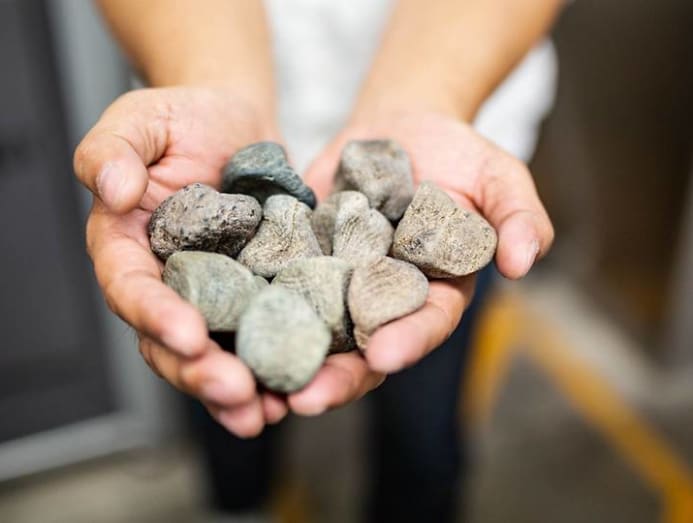
And the biggest issue of water usage? A staff said that no h2o is added at all in the wash with the eco stones. The jeans are placed into the machine wet and that is all the moisture used. "The nanobubble technology turns water into moisture particles to cut down h2o usage by 99 per cent," said Matsubara.
Past 2020, 100 per cent of the processes that you see hither today will exist bachelor in all our factories worldwide.
To remove the indigo stains, the JIC has another h2o- and bleach-free fob up its sleeves: Ozone gas cleansing. Indigo oxidises and fades in the presence of ozone, and when it is all washed, the gas is released into the temper where it becomes oxygen, or so we were told.
Any picayune amount of water is used, the JIC is however working on getting it 100 per cent recycled. I thought the displayed water samples looked transparent and clean, like NEWater. But they aren't quite there nevertheless, said Matsubara. "We never intended to reduce the water used for jeans washing by only 10 per cent or 20 per cent," he said. "Ultimately, we want to reduce h2o usage to goose egg."
ENCOURAGING RESPONSIBLE CONSUMERISM
If you're wondering how far Fast Retailing is from rolling out the technology seen at the JIC, it is already in employ.
"Around 60 per cent of our facilities at the moment accept the technology at the moment," said Matsubara. In fact, that pair of men's regular fit jeans that y'all might have recently bought from Uniqlo could be made using the technology.
"By 2020, 100 per cent of the processes that you run across here today will be available in all our factories worldwide," he said.
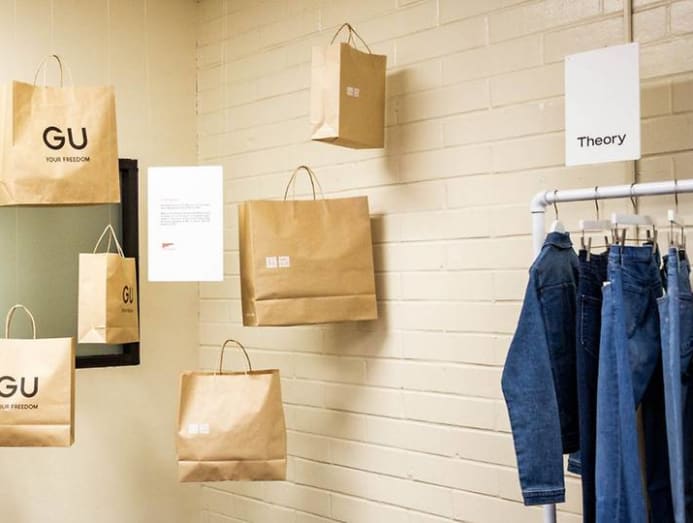
Across the clothes, there are other ways the Japanese retail giant is too looking into other eco-friendly measures, such as reducing the use of plastic bags and packaging in stores. The target is to reduce the employ of plastic past 85 per cent, which translates into "7,800 tonnes of plastic" past 2020, said Rochet.
Equally for Fast Retailing'due south adjacent eco-conscious pace, group senior vice president of sustainability Yukihiro Nitta said: "We would like to wait at raw materials for our next sustainability efforts, peradventure using recycled materials."
The dusty landscape that surrounded the R&D eye might await devoid of water but it sounded like ideas to further revolutionise garment production have started flowing.
CNA Lifestyle was in Los Angeles at the invitation of Uniqlo.
Source: https://cnalifestyle.channelnewsasia.com/style/how-are-vintage-jeans-made-uniqlo-234481
Post a Comment for "Uniqlo is cutting water usage by 99% so your jeans don't kill the planet"